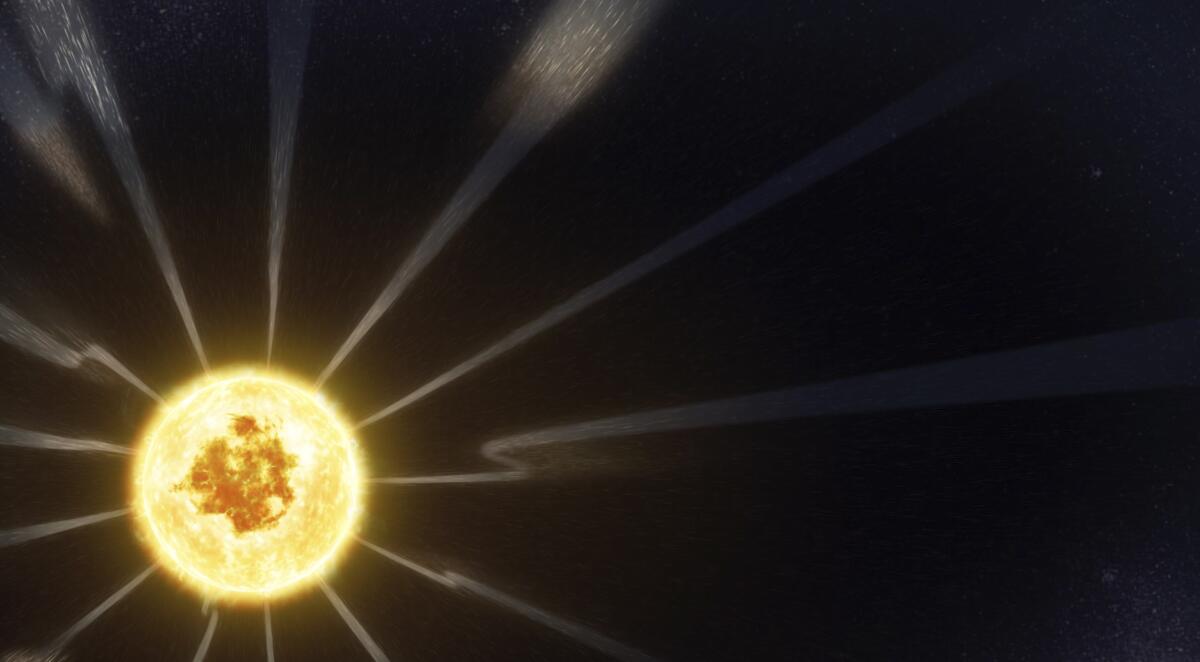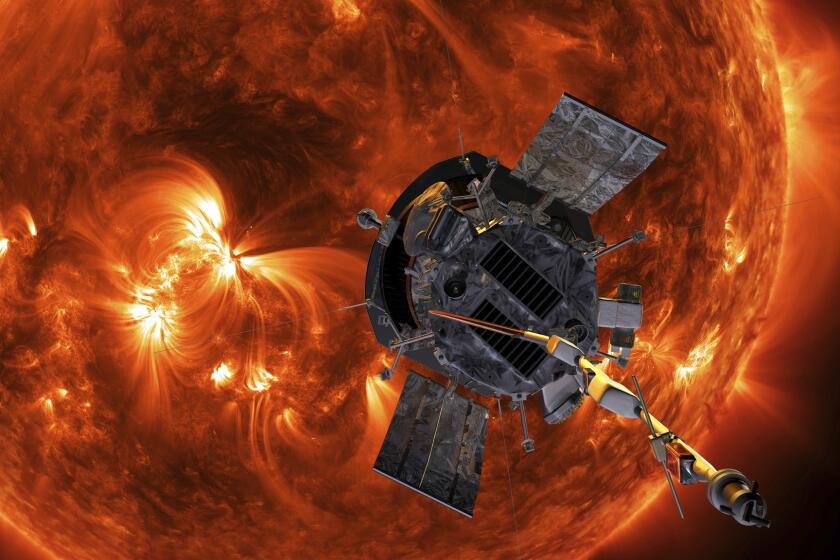NASA’s sun-skimming spacecraft has surprises for scientists

- Share via
CAPE CANAVERAL, Fla. — NASA’s sun-skimming spacecraft, the Parker Solar Probe, is surprising scientists with its unprecedented views of our star.
Scientists released the first results from the mission Wednesday. They observed bursts of energetic particles never seen before on such a small scale as well as switchback-like reversals in the out-flowing solar magnetic field that seem to whip up the solar wind.
NASA’s Nicola Fox, director of the space agency’s heliophysics division, compared this unexpected switchback phenomenon to the cracking of a whip.
“They’re striking and it’s hard to not think that they’re somehow important in the whole problem,” said Stuart Bale, a UC Berkeley plasma astrophysicist and member of the mission team.
Researchers said they also finally had evidence of a dust-free zone encircling the sun. Farther out, there’s so much dust from vaporizing comets and asteroids that one of 80 small viewfinders on one of the solar probe’s instruments was pierced by a grain this year.
“I can’t say that we don’t worry about the spacecraft. I mean, the spacecraft is going through an environment that we’ve never been before,” Fox said.
This weekend, in the dark hours before dawn, NASA plans to send a spacecraft to touch the sun.
Launched in 2018, Parker has come within 15 million miles of the sun and will get increasingly closer — within 4 million miles — over the next six years. It’s completed three of 24 orbits of the sun, dipping well into its upper atmosphere, the corona.
The goal of the mission is to shed light on some of the mysteries surrounding the sun.
Parker will sweep past Venus on Dec. 26 for the second gravity-assist of the $1.5-billion mission and make its fourth close solar encounter in January.
The findings, described in multiple studies in Wednesday’s edition of the journal Nature, were made during a relatively quiet phase of solar activity.
“We’re just starting to scratch the surface of this fascinating physics,” said Princeton University space plasma physicist David McComas, the chief scientist of one of the spacecraft’s instruments.
Future NASA mission to sun is ‘a life’s dream’ for some
As Parker gets even closer to its target, the sun will go through an active phase “so we can expect even more exciting results soon,” University College London’s Daniel Verscharen wrote in Nature. Verscharen studies the sun but was not part of the NASA mission.
Over the summer, Fox shared these early results with solar astrophysicist Eugene Parker, 92, professor emeritus at the University of Chicago for whom the spacecraft is named. He expressed excitement — “wow” — and was keen to be involved.
It’s the first NASA spacecraft to be named after a person still alive. Parker attended its launch last year from Cape Canaveral.





